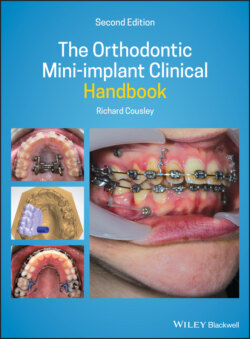Читать книгу The Orthodontic Mini-implant Clinical Handbook - Richard Cousley - Страница 37
2.4 Maxillomandibular Planes Angle
ОглавлениеPatients with a dolichofacial (long face) pattern and a high maxillomandibular planes angle (MMPA) (Figure 2.4) have an increased risk of failure for maxillary buccal mini‐implants. This is an anatomical factor, due to their relatively thin maxillary buccal cortical plates (compared with ‘short’ face, brachyfacial, patients) [34,38,42–45]. However, these dolichofacial patients also typically present with an anterior openbite which may benefit from maxillary molar intrusion. This could affect mini‐implant stability in those patients who need mini‐implant intrusion for correction of an anterior openbite, and this factor will be discussed further in Chapter 10. Fortunately, this problem of poor stability of maxillary buccal mini‐implants may be avoided by mini‐implant insertion in palatal alveolar sites [11,46].
Figure 2.4 Lateral cephalograms of mini‐implant anchorage patients exhibiting (a) long and (b) short face patterns. However, note that these images cannot illustrate the cortical bone characteristics.
